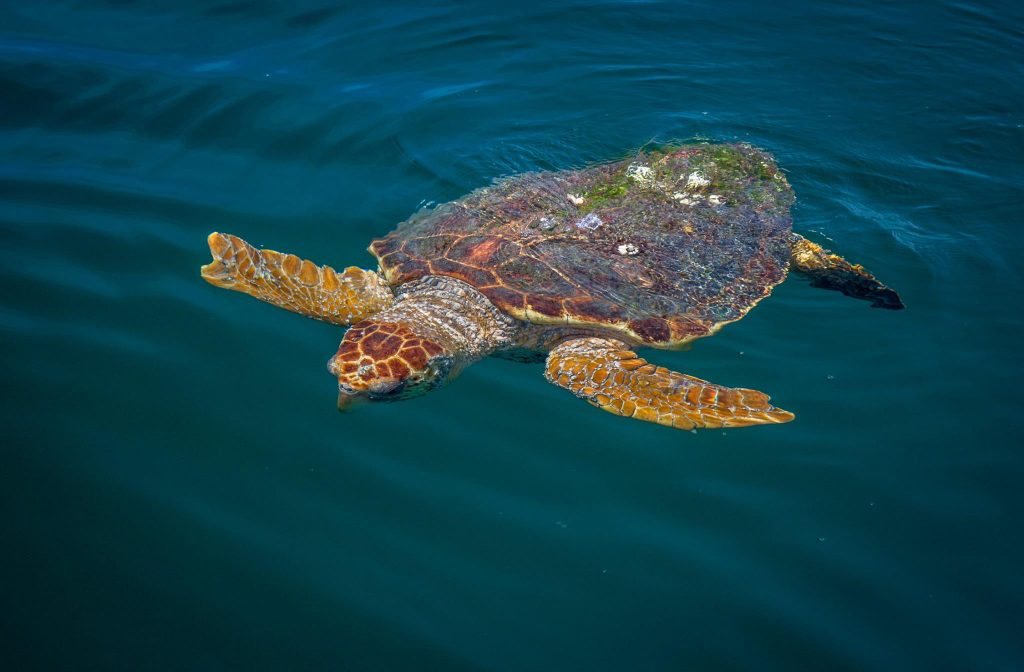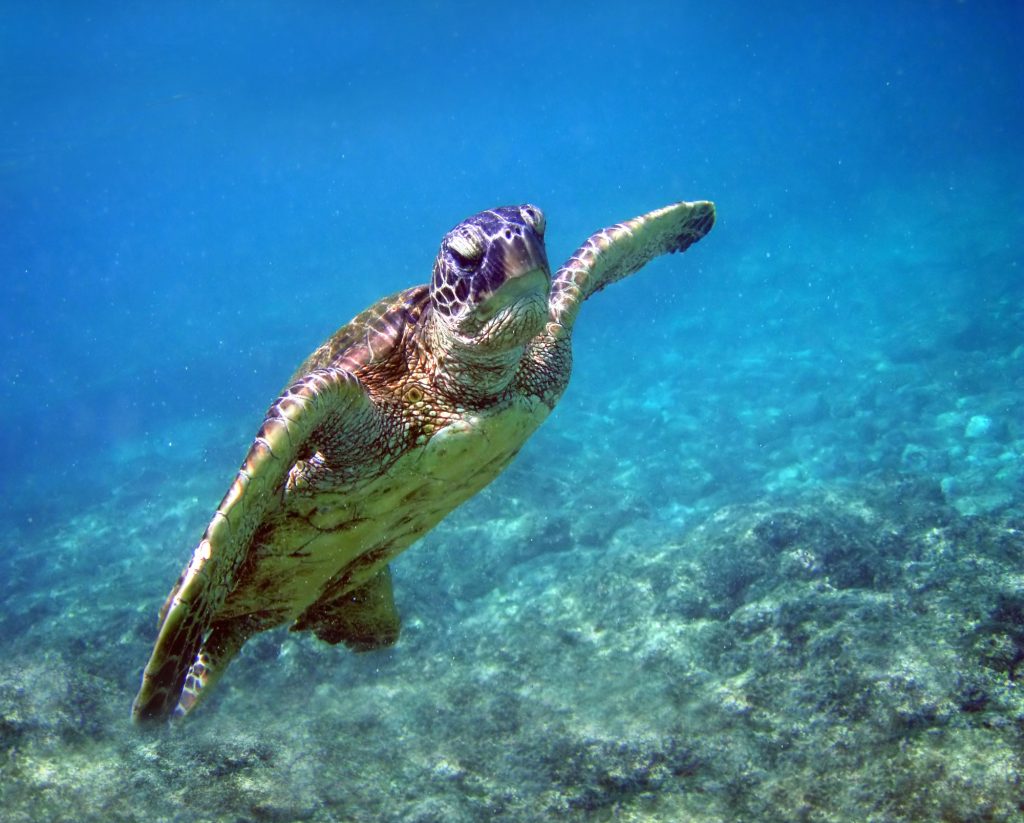
For over 100 million years, since the age of the dinosaurs, sea turtles had thrived in the world’s oceans. In recent years however, incidental drowning in commercial fishing gear, ingestion of plastics and other man-made debris, poaching, and habitat destruction have brought these wondrous creatures to the brink of extinction. The coastal waters of North Carolina play a vital role in the viability of populations by hosting 5 of the world’s 7 species of sea turtle. Most common are the green sea turtle, loggerhead and Kemp’s Ridley followed by the leatherback and hawksbill. All species are listed as endangered or threatened and are therefore protected under the Endangered Species Act.
Life History
The shores of North Carolina provide over 300 miles of nesting grounds for sea turtles. Mature females return every 1 to 3 years to beaches near where they were born, coming ashore to nest in the protective cover of night. A hole close to 1 ½ feet deep will be excavated using rear flippers. Each female will then deposit roughly 100 eggs per clutch. These eggs will incubate for 60 days before hatching. According to the National Park Service, sex of offspring is determined by sand temperature with warmer temperatures producing females and cooler temperatures males. Once incubation is complete hatchlings will emerge from their shells, boil out of the nest and rush to the surf using lunar light cues. What happens next has eluded scientists and been termed the “lost years” mystery until recently. Loggerhead hatchlings in particular have been recorded swimming up to several days to reach the seaweed nursery in the Gulf Stream known as the “Sargasso Sea”. Green and Kemp’s Ridley “toddlers” have also been tracked actively swimming to favorable ocean habitats as opposed to passive travel. Hatchlings will spend these one to ten lost years here before returning to prey rich coastal waters to mature. It is estimated, sadly, that only one in 1,000 to 10,000 hatchlings survive to maturity, which varies among sea turtle species (Kemp’s ridley 10 years; leatherback 15 years; Green, loggerhead and hawksbill 20 to 50 years). Once a female turtle reaches maturity she will migrate back to the beach of her birth to begin the cycle once more.
Avoiding Sea Turtle Interactions
To avoid catching a sea turtle, do not cast your line if you see turtles in the area. Use barbless circle hooks to aid in removal and to decrease the chance of deep hooking. For more on the benefits of circle hooks please click here. (Link back to Circle Hook page) Watch your bait and check your gear often especially after nibbles.
Procedure for Sea Turtle Fishing Hook Removal
- Immediately call the NC Wildlife Resource Commission’s North Carolina Stranding Response Team 252-241-7367.
- If on a boat turn off the engine to avoid propeller strike.
- Do not lift the turtle by the hook or pull by the line, doing so will cause the hook to become further embedded. Instead use a dip net to support the turtle’s body weight.
- Turtles have powerful jaws so keep hands away from the turtle’s mouth and avoid prying open.
- If the turtle is simply snagged use a de-hooking device to extract the hook. Remove all line from around the turtle before releasing.
- If the hook has been swallowed or is embedded DO NOT REMOVE. Use blunt scissors or a knife to cut the line, leaving at least two feet of line to aid the responders in de-hooking.
- If you cannot reach the response team and are unable to bring the turtle to shore, cut the line as short as possible before releasing.
Reporting Stranded Sea Turtles
Female egg-laying turtles are the only sea turtles that should be found on our beaches and only from May to August during nesting season. Other sea turtles that wash ashore are sick, injured, cold-stunned or dead. According to the North Carolina Sea Turtle Project, 468 sea turtles strand here annually. Sadly the NC Wildlife Resources Commission states that only 20 to 30% of deceased turtles strand and are reported the other 80% are either carried out to sea or never identified. Reporting a stranding ensures that turtles are retrieved quickly and shuttled to centers for treatment. Data detailing how and where these turtles strand is of tremendous importance. This information enables scientists to gain a better understanding of factors that influence populations and aids in management decisions that affect conservation of these protected species. It is imperative that ALL strandings, even those of dead or decomposing turtles, are reported.
If you happen upon a stranded turtle please call (252) 241-7367 and detail the date, time, your specific location, condition and size of the turtle, your name and a number where you can be reached. If the turtle is alive please wait for further instructions as stress and further injury to the turtle may be added by good intentions.






